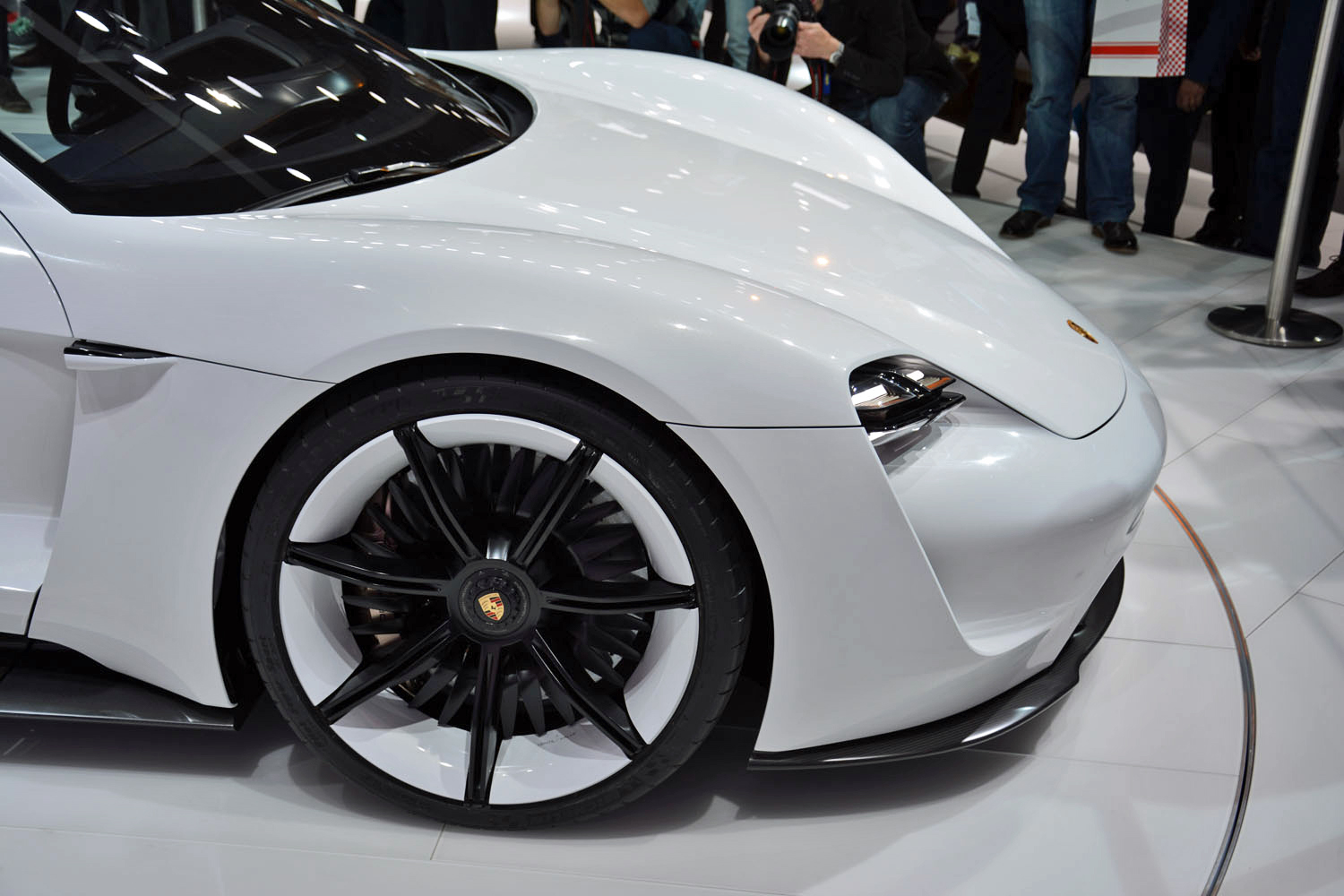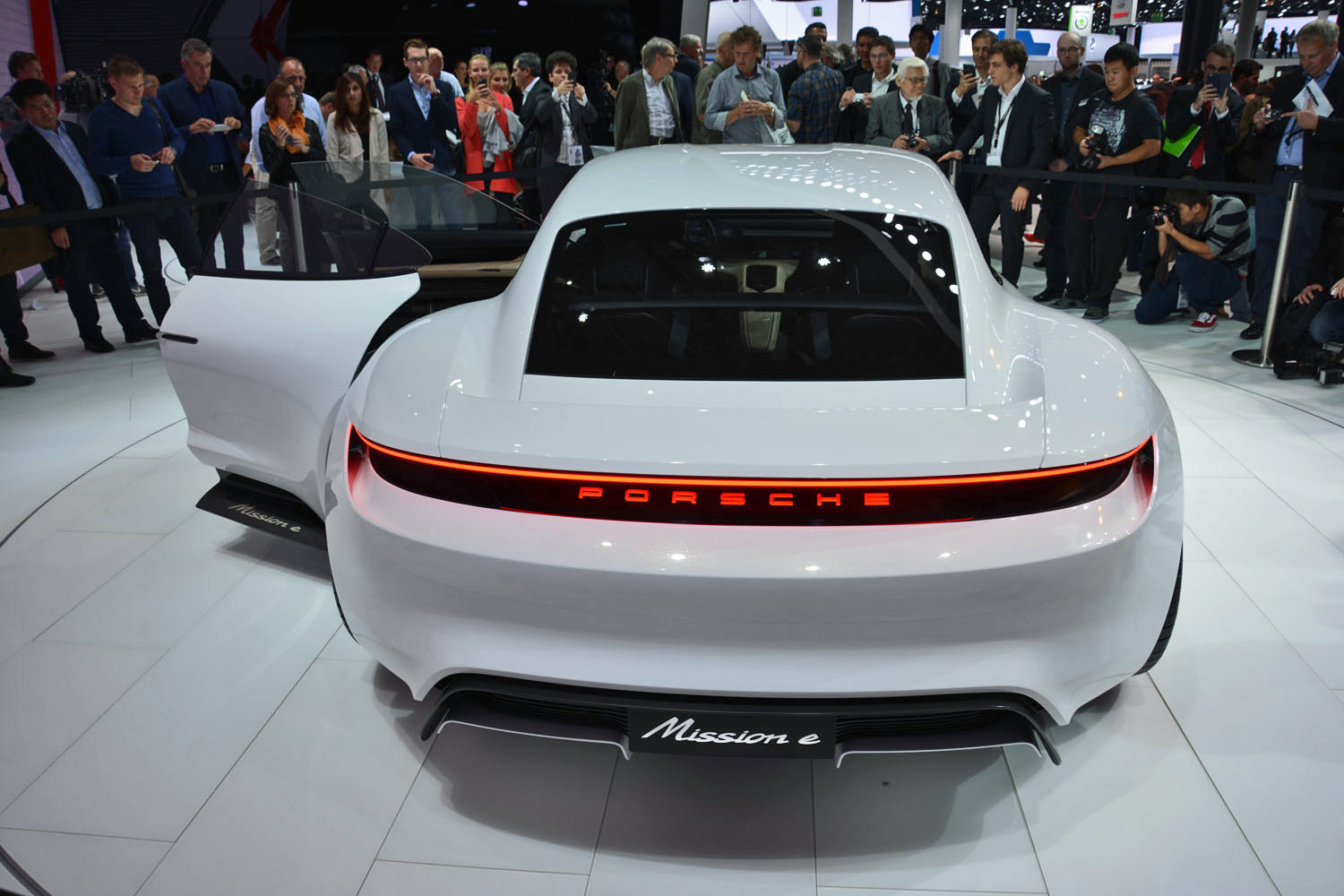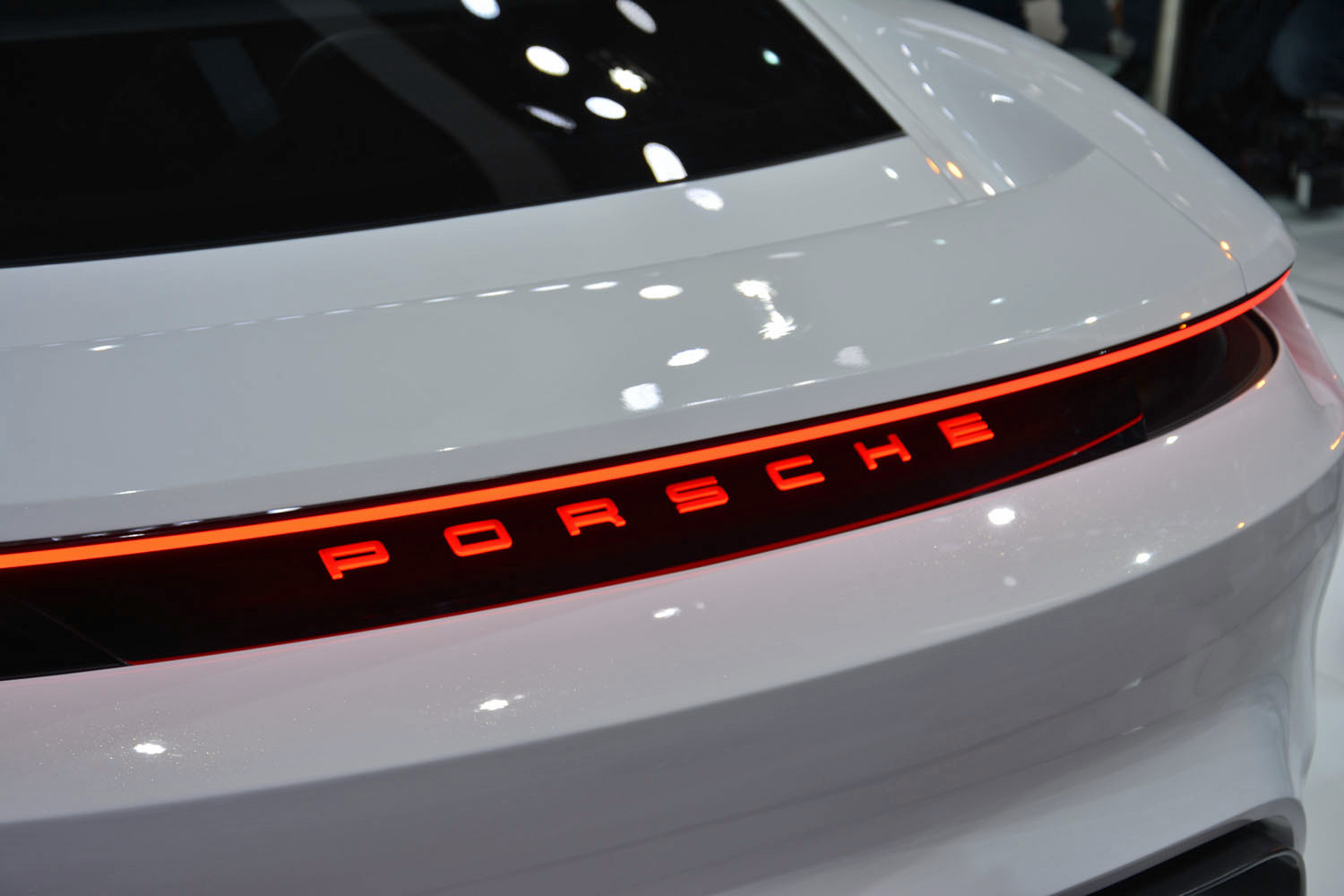Porsche has taken the wraps off its first all-electric, four-seat sports car, the Mission E Concept.
Designed to challenge Tesla’s Model S, the Mission E boasts over 600 horsepower from an 800-volt e-drive system derived from Motorsport applications. Two permanent magnet synchronous motors (PMSM) – just like the Le Mans winning Porsche 919 hybrid – drive all four wheels and recover energy while braking. The combination propels the Mission E to 62 mph in 3.5 seconds and to 124 mph in under 12.0 seconds.
In addition to all-wheel drive, the Mission E borrows four-wheel steering from models like the Porsche 911 GT3 and uses an advanced torque-vectoring system to keep power down. Porsche claims the e-drive system can accelerate with its full power repeatedly, unlike other electric systems, and helps the Mission E lap the Nurburgring in under eight minutes.
Other highlights include a 15-minute charge time (for 80 percent of the batteries full capacity) and a 500-kilometer/310-mile maximum range. These feats are possible thanks to the “Porsche Turbo Charging system’s lighter, smaller gauge copper cables that are sufficient for energy transport.” The 800-volt system can also be adapted for standard 400-volt charging systems at a slower recharging pace.
Inside, Porsche has added eye-tracking and gesture control for its infotainment system and driver controls, including holograms that are “highly oriented toward the driver by automatically adjusting the displays to the driver’s position.” Though I’m not quite clear on what that means, it sounds very cool.
In terms of driving dynamics, the Mission E’s low center of gravity, lightweight construction (aluminum, steel, and carbon fiber reinforced polymer), and even weight distribution give the concept “emotional sportiness.”
The design is inspired by Porsche’s 918 Spyder and 911 Carrera, including a sweptback roofline and low, squat stance. The Mission E also uses a new type of Matrix LED headlight in Porsche’s four-point headlight design. The lack of a B pillar gives the concept a two-door coupe look and the doors open in suicide-style.
Obviously several of these design elements won’t make it to production, but if the electric drivetrain carries over, the Tesla Model S will have a sincere rival on its hands.












